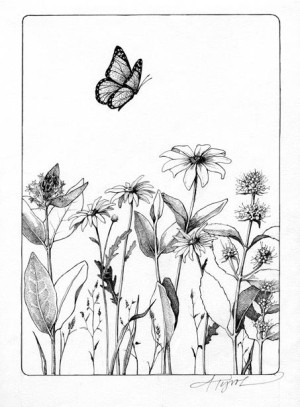
Vermont and New Hampshire are great places to live, if for no other reason than the wildlife. At any given moment, you might glance out the window upon a profusion of lively flowers jostled by hummingbirds and butterflies, or glimpse some of our larger, rarer visitors, such as bear and moose. Most of us appreciate wildlife that is – for the most part – up close and personal; which is where the concept of “backyard wildlife habitats” comes in.
This is actually a trademarked term for a National Wildlife Federation (NWF) program: for those passionate about creating wildlife oases out the back door, NWF has a website (www.nwf.org/backyard/) where you can analyze your current backyard and use a planning tool to create a much more wildlife-friendly one. After you have completed your yard renovation, you can even have it certified by the NWF.
For those who would like to take doing-it-yourselfing to the next level, there are many resources out there (try the Natural Resources Conservation Service’s website, www.nrcs.usda.gov/feature/backyard/), and they all start out with the same premise, one that applies to all life forms: by including food, water, shelter, and safe havens for raising young, you can attract everything from birds and butterflies to deer and moose.
Most habitat advice concerns birds, since they tend to be universally appealing. Stephen W. Kress, in his new publication, The Audubon Society Guide to Attracting Birds, encourages homeowners to study natural environments and to mimic them in their backyards (a tactic that will work for all species of wildlife). “For the small property owner,” he writes, “this usually means increasing the variety of vegetation by replacing expansive, close-cropped lawns with creative landscaping that emphasizes a layering and clumping of native bird-attracting plants. If care is taken to select plants with high wildlife value, and then to plant them in appropriate places and not abandon them to deer, drought, and weeds, the result can be a property that is easy to maintain and alive with birds.” And butterflies, too.
Kress recommends first inventorying your property and then formulating a plan of action that includes: optimizing edge (edges – where different plant communities meet – are rich wildlife habitats) with fruiting and evergreen shrubs; maximizing vegetation levels so that a number of feeding and nesting platforms are created; relinquishing some lawn to a more diverse ground cover (usually whatever grows if you stop mowing); constructing habitats (leaving leaf and brush piles for ground-nesting birds, planting trees and shrubs for birds that nest higher up, and installing bluebird and wood duck boxes); creating food patches (by leaving weed patches and planting native wildflowers and fruiting shrubs); and ensuring a water source. In Vermont and New Hampshire, Kress recommends planting trees and shrubs such as white pine, crabapple, dogwood, hawthorn, and serviceberry, along with a variety of brambly berries and climbing vines.
There are a few other not-so-obvious animal species you might consider welcoming into your backyard, including bees and bats. Your vegetables, perennials, annuals, and fruit trees will all benefit from the pollination power of more bees. Flowers are a natural attractant to most bees, but those bees have to come from somewhere in the spring, and that somewhere is where they spent the winter – usually a hive in an old, rotting tree. Keeping a few hive trees around will help, but also consider building a hive for solitary bees and wasps, which are often better pollinators than your standard honeybees or bumblebees. Drill 6-inch-deep holes, ranging from 1/8-inch to 5/16-inch in diameter, into a block of wood, put a roof on, and place it near the garden in a southern orientation. In winter, put the box under a larger shelter to protect it from winter’s wind and snow.
Bats eat mosquitoes and other pests, thereby allowing us to better enjoy our backyard habitats. If you don’t want bats in your barn, keep those old, dying trees around, or consider building (or buying) a bat house. Plans and houses are available from several websites, including www.batconservation.org.
Then there are the wildlife species some people wait a lifetime to see and which others would just as soon encounter only at the zoo. A visiting bear, for instance, is a rare treat – but when that same bear engineers his way into your porch, his visit can turn into a rare disaster. Bears, like most animals, are highly motivated by food – so plant a patch of brambles, including raspberries, for the enjoyment of yourself and the bear, but at a fair distance from the house. And pack your birdfeeders and feed well away before April, unless you want to open the curtains and come face to face with a hairy, hungry visitor.
For specific information on creating wildlife-friendly backyards in Vermont and New Hampshire, visit each state’s fish and wildlife department for more information (www.vtfishandwildlife.com/edu_general.cfm and www.wildlife.state.nh.us/Wildlife/create_wildlife_habitat.htm).

